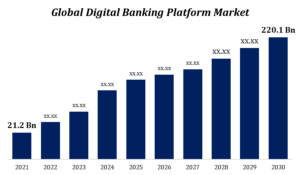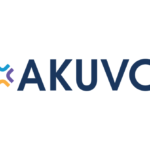How Fintech Is Addressing Financial Illiteracy Through Interactive Learning Tools
Financial illiteracy is a pervasive issue affecting millions globally, impacting individuals’ ability to manage money effectively, plan for the future, and make informed financial decisions. As financial technology (fintech) continues to evolve, it is playing a crucial role in combating financial illiteracy by offering innovative and interactive learning tools. These tools are designed to educate users about personal finance, investment strategies, budgeting, and more in engaging and accessible ways. This blog explores how fintech is addressing financial illiteracy through interactive learning tools and their impact on financial education.
The Need for Financial Education
Financial illiteracy can lead to poor financial decisions, increased debt, and inadequate savings. Traditional financial education methods, such as textbooks and lectures, often fail to engage learners or address their unique financial situations. As a result, there is a growing demand for interactive and personalized educational tools that make financial learning more effective and engaging.
Key Interactive Learning Tools Offered by Fintech
1. Gamified Financial Education Apps
Description: Gamified apps use game-like elements to make financial education more engaging and fun. These apps often include quizzes, simulations, and rewards to motivate users to learn about financial concepts.
Examples:
- Financial Literacy Games: Apps like Kahoot! offer interactive quizzes on financial topics, making learning competitive and enjoyable.
- Simulation Platforms: Platforms like Stock Market Game allow users to simulate investing and trading, providing hands-on experience without real-world risk.
Benefits:
- Increased Engagement: Gamification makes learning enjoyable and encourages regular use.
- Practical Experience: Simulations provide practical experience, helping users understand real-world financial scenarios.
2. Personalized Financial Coaching
Description: Fintech platforms offer personalized financial coaching through chatbots, virtual assistants, and human advisors. These tools provide tailored advice based on individual financial goals and behaviors.
Examples:
- AI-Powered Chatbots: Services like Cleo offer financial advice and budgeting tips through conversational AI, making financial coaching accessible and interactive.
- Virtual Financial Advisors: Platforms such as Betterment provide personalized investment recommendations and financial planning assistance based on user profiles.
Benefits:
- Customization: Personalized coaching addresses specific financial needs and goals.
- Accessibility: Users can receive advice and support at their convenience, without needing to visit a financial advisor in person.
3. Interactive Budgeting Tools
Description: Interactive budgeting tools help users create and manage budgets through visual interfaces and real-time tracking. These tools often include features like expense categorization, goal setting, and spending alerts.
Examples:
- Budgeting Apps: Apps like YNAB (You Need a Budget) offer interactive features for tracking expenses, setting financial goals, and analyzing spending habits.
- Expense Trackers: Tools such as Mint provide visual dashboards and notifications to help users stay on top of their budget.
Benefits:
- Real-Time Tracking: Users can monitor their spending and adjust their budget as needed.
- Visual Insights: Interactive charts and graphs make it easier to understand financial data.
4. Educational Content and Courses
Description: Many fintech platforms provide educational content, including articles, videos, and online courses, to help users learn about various financial topics at their own pace.
Examples:
- Financial Education Platforms: Websites like Investopedia offer articles, tutorials, and video content on a wide range of financial topics.
- Online Courses: Platforms such as Coursera and Udemy provide comprehensive courses on personal finance, investing, and financial planning.
Benefits:
- Comprehensive Learning: Users can access a wide range of educational materials covering various financial topics.
- Self-Paced Learning: Individuals can learn at their own pace and revisit content as needed.
5. Interactive Investment Simulators
Description: Investment simulators allow users to practice investing without risking real money. These tools provide a virtual environment where users can test strategies and learn about the stock market.
Examples:
- Stock Market Simulators: Platforms like Investopedia Simulator and HowTheMarketWorks offer virtual trading environments for users to practice buying and selling stocks.
- Crypto Simulators: Tools like CoinMarketCap’s portfolio simulator let users track virtual cryptocurrency investments.
Benefits:
- Risk-Free Practice: Users can experiment with different investment strategies without financial risk.
- Educational Value: Simulators provide practical experience and insights into market dynamics.
Impact of Interactive Learning Tools on Financial Literacy
1. Enhanced Engagement and Motivation
Interactive tools make financial education more engaging, leading to higher levels of motivation and participation. Gamified elements and personalized coaching help users stay interested and committed to learning about finance.
Example: A user who enjoys a gamified budgeting app is more likely to regularly check and manage their budget compared to traditional methods.
2. Personalized and Relevant Learning
Personalized tools offer tailored educational experiences based on individual financial situations and goals. This relevance increases the effectiveness of financial education and helps users apply concepts to their own lives.
Example: A personalized financial coach can provide advice specific to a user’s financial situation, leading to more meaningful and actionable insights.
3. Improved Financial Decision-Making
Interactive learning tools provide users with practical experience and real-time feedback, improving their ability to make informed financial decisions. By practicing with simulations and budgeting tools, users gain confidence in managing their finances.
Example: A user who has practiced investing through a simulator may feel more confident in making real investment decisions.
4. Broader Reach and Accessibility
Fintech tools make financial education more accessible to a broader audience. Mobile apps and online platforms can reach individuals who may not have access to traditional financial education resources.
Example: A user in a remote area with limited access to financial advisors can benefit from online courses and budgeting apps.
Challenges and Considerations
1. Ensuring Accuracy and Reliability
It is crucial for fintech platforms to ensure that the information and advice provided through interactive tools are accurate and reliable. Users should be cautious and verify information from reputable sources.
Challenge: Misinformation or outdated content could lead to poor financial decisions.
2. Addressing Diverse Needs
Interactive learning tools should cater to diverse financial backgrounds and learning styles. Offering a range of educational resources and customization options can help address varying needs.
Challenge: Creating content and tools that are relevant and effective for a broad audience.
3. Privacy and Security
Fintech platforms must prioritize user privacy and data security, especially when handling sensitive financial information. Ensuring robust security measures helps build trust and protect users.
Challenge: Safeguarding user data from breaches and unauthorized access.


































